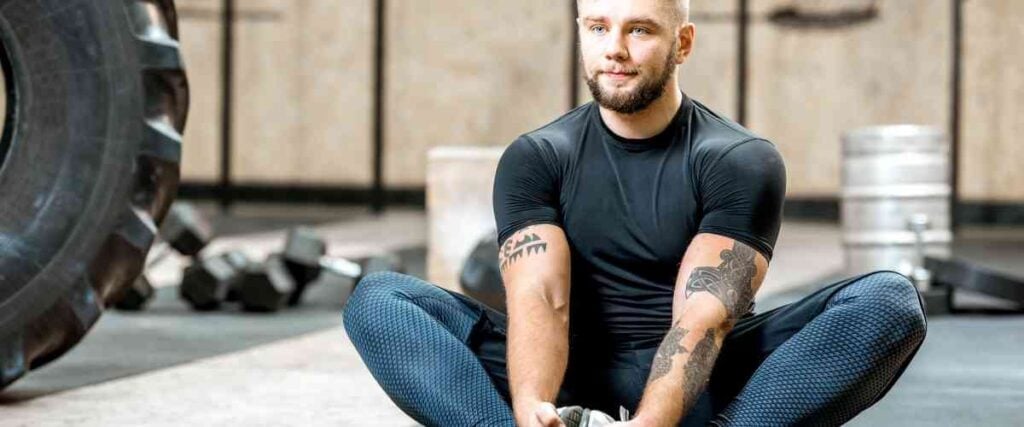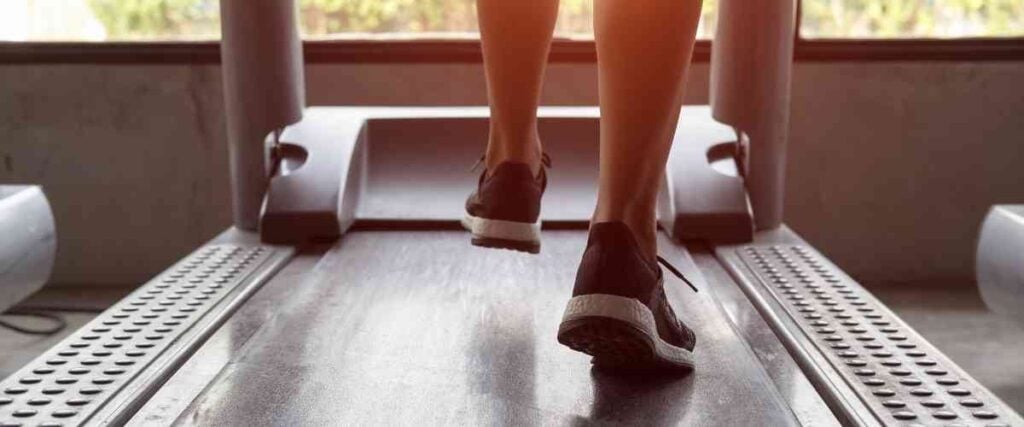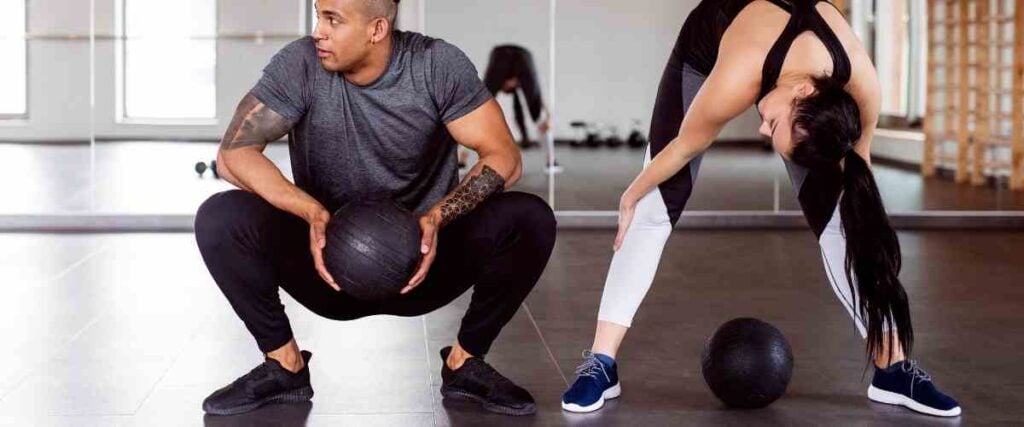
How to Prevent Shin Splints as Runners
- What are running shin splints?
- What causes shin splints?
- What are the symptoms of shin splints?
- How do I get rid of shin splints as a runner?
- Returning to running after shin splints
- How do I prevent shin splints as a runner?
- 6 exercises to prevent shin splits for runners
- When to see a doctor
- Key Takeaways:
Certain types of athletes are more prone to experience specific injuries and runners are no exception. Both new and experienced runners are likely to experience shin splints at some point.1 So, whether you’re running indoors on a treadmill with Vingo or outdoors on the pavement, knowing what shin splints are, what causes them, and the proper steps to take for treatment and prevention is helpful.
What are running shin splints?

“Shin splints” is a term used to describe pain along the inner edge of the shin bone (tibia), the long bone in the front of your lower leg. Medically known as medial tibial stress syndrome, running shin splints can be very painful and may lead to other issues if you don’t treat them.
Shin splints typically develop after physical activity. While any type of physical activity can bring them on, shin splints are often associated with running. Dancers and military recruits frequently get them too.
If you have just started a new running routine or have flat feet or high arches, you may be more likely to get shin splints.
What causes shin splints?

Most often, shin splints are an overuse injury. They’re caused by repetitive stress on your shin bone and the connective fibers between your muscles and bone. Several factors can increase your likelihood of getting shin splints:2
- Sudden changes in physical activity: Starting a new training routine or suddenly increasing the intensity of your physical activity can sometimes bring on shin splints.
- Frequent running: If you’re an avid runner or you just started a new running program, you’re more likely than other athletes to get shin splints.
- Flat feet or high arches: These characteristics can increase the stress on your lower leg muscles when you exercise.
- Worn-out shoes: If your shoes don’t provide the right amount of support and cushioning, you’re more likely to experience pain and discomfort in your legs and elsewhere.
What are the symptoms of shin splints?

Shin splints typically cause pain along your shin bone, but sometimes you may also experience swelling. The pain can be dull or sharp and may occur before or after exercising. Touching the affected area might make the pain worse.
If you’re experiencing shin splints for the first time as a runner, the pain might go away when you stop exercising. However, eventually, it might persist and escalate into a stress fracture.
How do I get rid of shin splints as a runner?

Treatment for shin splints is relatively straightforward and can be completed at home. To recover as quickly as possible, implement the following treatment methods:
- Rest: Take at least two weeks off from your regular exercise routine. If you want to stay physically active while resting, you can substitute more intense exercises with lower-intensity training, such as cycling or swimming.
- Ice: Put ice on the affected area in 20-minute intervals several times a day. Use cold packs or wrap the ice in a cloth before applying it to your skin.
- Over-the-counter pain relievers: Medications like ibuprofen can help reduce the pain and swelling associated with shin splints.
- Compression: For swollen shins, consider wrapping the area with a compression bandage to reduce the swelling.
- Light stretching: Gently stretching your lower leg muscles may relieve the pain.
- Proper shoewear: Wear supportive shoes when you’re out and about. If you have consistent problems with shin splints, custom-made or premade orthotics may also help.
Returning to running after shin splints

After treating your shin splints, it’s best to return to exercise gradually. Don’t expect to pick right back up where you left off. Doing so could cause further injury. Instead, take it slow and reduce the frequency and intensity of your workouts.
Make sure your routine includes a thorough warmup and cooldown routine. If you feel the same pain when you start running again, stop immediately, put ice on the affected area, and rest for a few days before trying again.
How do I prevent shin splints as a runner?

Shin splints can wreak havoc on your running routine and training. However, the following tips can help prevent them in the future:
- Don’t push yourself too hard. If you’re new to running or training for an event, avoid overdoing it. Make sure your training is slow and steady, and rest if you start feeling any pain or discomfort.
- Cross-train with a low-impact activity. Too much running may result in an injury. Instead, alternate your activity by cross-training with a different form of exercise, such as swimming, strength training, or cycling. Indoor cycling with Vingo makes riding extremely convenient and fun, especially if you’re already using it to run indoors!
- Update your footwear. Experts recommend replacing your running shoes every 300 to 500 miles.3 If you experience consistent aches and pains after running, your feet feel sore, or the treads on your shoes are worn out, it’s time to swap them out for a fresh new pair.
- Adjust your running form. Take a good look at your running form and identify potential issues that could be contributing to your shin splints. Even small adjustments can help you avoid pain and discomfort.
- Alternate between hard and easy runs. This will give your body a chance to rest and rebuild its energy stores.
- Stretch regularly. Stretching before and after your runs can help to prevent shin splints.
- Always warm up before running. This will help to loosen your muscles and prepare them for the activity.
6 exercises to prevent shin splits for runners

- Calf Raises: Calf raises are a great way to strengthen your calves, which can help prevent shin splints. Place your feet hip-width apart and rise up on your toes, then slowly lower them back down.
- Ankle Circles: Ankle circles are another great way to loosen up your muscles and help prevent shin splints. Rotate your ankles in a circular motion 10 times in each direction.
- Standing Quadriceps Stretch: The quadriceps are responsible for extending the knee, so it’s important to stretch them regularly. Standing quadriceps stretches are a great way to do this. Stand with one foot in front of the other, and lunge forward with the back leg until you feel a stretch in the front of your thigh. Hold for 30 seconds, then switch legs and repeat.
- Hamstring Stretch: The hamstring muscles are responsible for bending the knee, so it’s important to stretch them regularly as well. Hamstring stretches can be done seated or standing. For a seated hamstring stretch, sit with one leg bent in front of you, and reach for the toes of the extended leg. For a standing hamstring stretch, stand with one foot in front of the other, and lean forward while keeping your back straight until you feel a stretch in the back of your thigh. Hold for 30 seconds, then switch legs and repeat.
- Glute Bridge: The glute bridge is a great exercise for strengthening your glutes, which can help prevent shin splints. Lie flat on your back with feet flat on the ground and shoulder-width apart, then lift your hips off the ground until your thighs and torso are in line with each other. Hold for two seconds, then lower yourself back down. Repeat 10-15 times.
- Wall Sit: The wall sit is another great exercise for strengthening your quads and hamstrings, which can help prevent shin splints. Lean against a wall with your feet hip-width apart and knees bent at 90 degrees, then hold for 30 seconds or longer if possible.
When to see a doctor

If your shin splints don’t improve or go away after applying the treatment methods listed in this article, it’s best to call your doctor. You could potentially have another medical condition hindering the healing process. If that’s the case, it’s a good idea to determine the underlying cause and get proper treatment.
The doctor may need to complete some tests to rule out other types of shin problems, like stress fractures or tendonitis.
- A stress fracture is a small crack in your shin bone. These are usually caused by overtraining. A doctor can diagnose a stress fracture with an MRI.
- Tendonitis is inflammation or a tear in your tendons. The pain is similar to shin splints, but a doctor can diagnose tendonitis with an MRI to confirm it.
Ideally, once the doctor determines the source of the issue and treats it, you should be well on your way to a full recovery and back to a regular running and exercise routine.
Key Takeaways:
The term “shin splints” is a term used to describe a painful overuse injury often experienced by runners. The most common treatment methods for shin splints include ice, rest, and over-the-counter pain medications. In some instances, the pain may be caused by another condition like a stress fracture or tendonitis. If the pain doesn’t go away after treating it for a few weeks at home, it’s best to call your doctor.Sources:
- The American Academy of Orthopaedic Surgeons. (n.d.). Shin Splints. OrthoInfo. https://orthoinfo.aaos.org/en/diseases–conditions/shin-splints/
- Shin splints – Symptoms and causes. (2021, October 16). Mayo Clinic. https://www.mayoclinic.org/diseases-conditions/shin-splints/symptoms-causes/syc-20354105
- Capritto, A. (2022, April 27). 5 Signs You Need to Replace Your Old Running Shoes. CNET. https://www.cnet.com/health/fitness/5-signs-you-need-to-replace-your-old-running-shoes/








